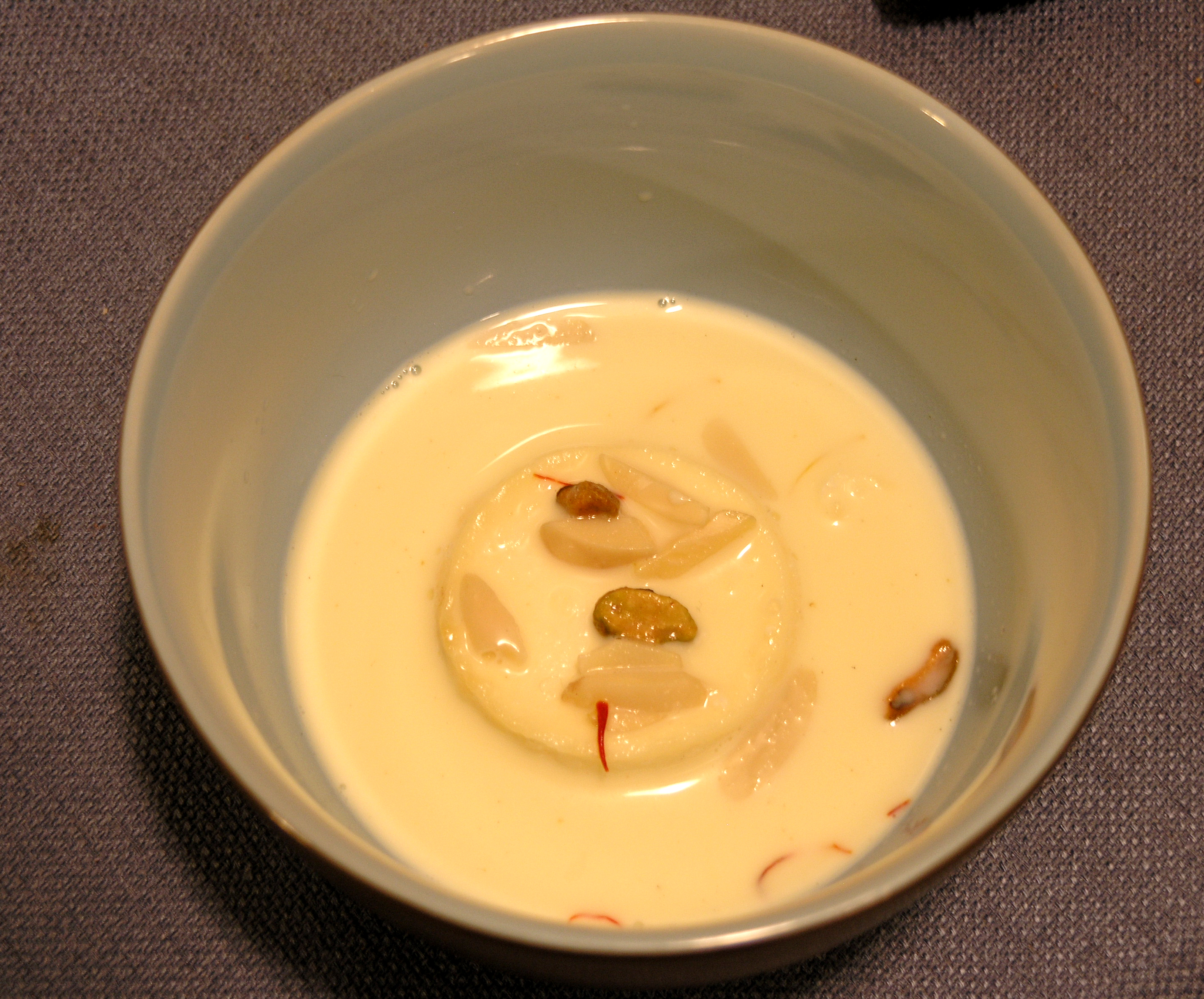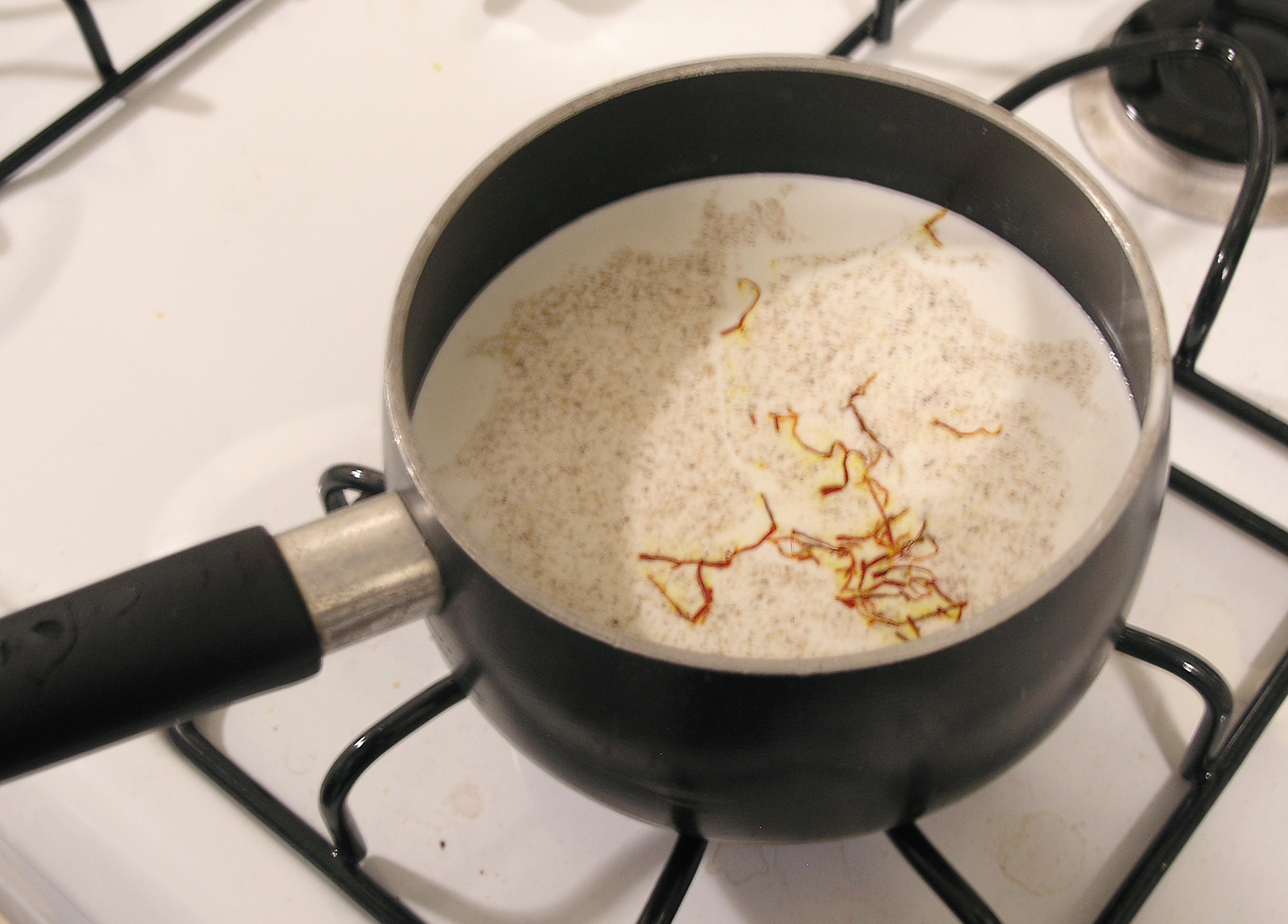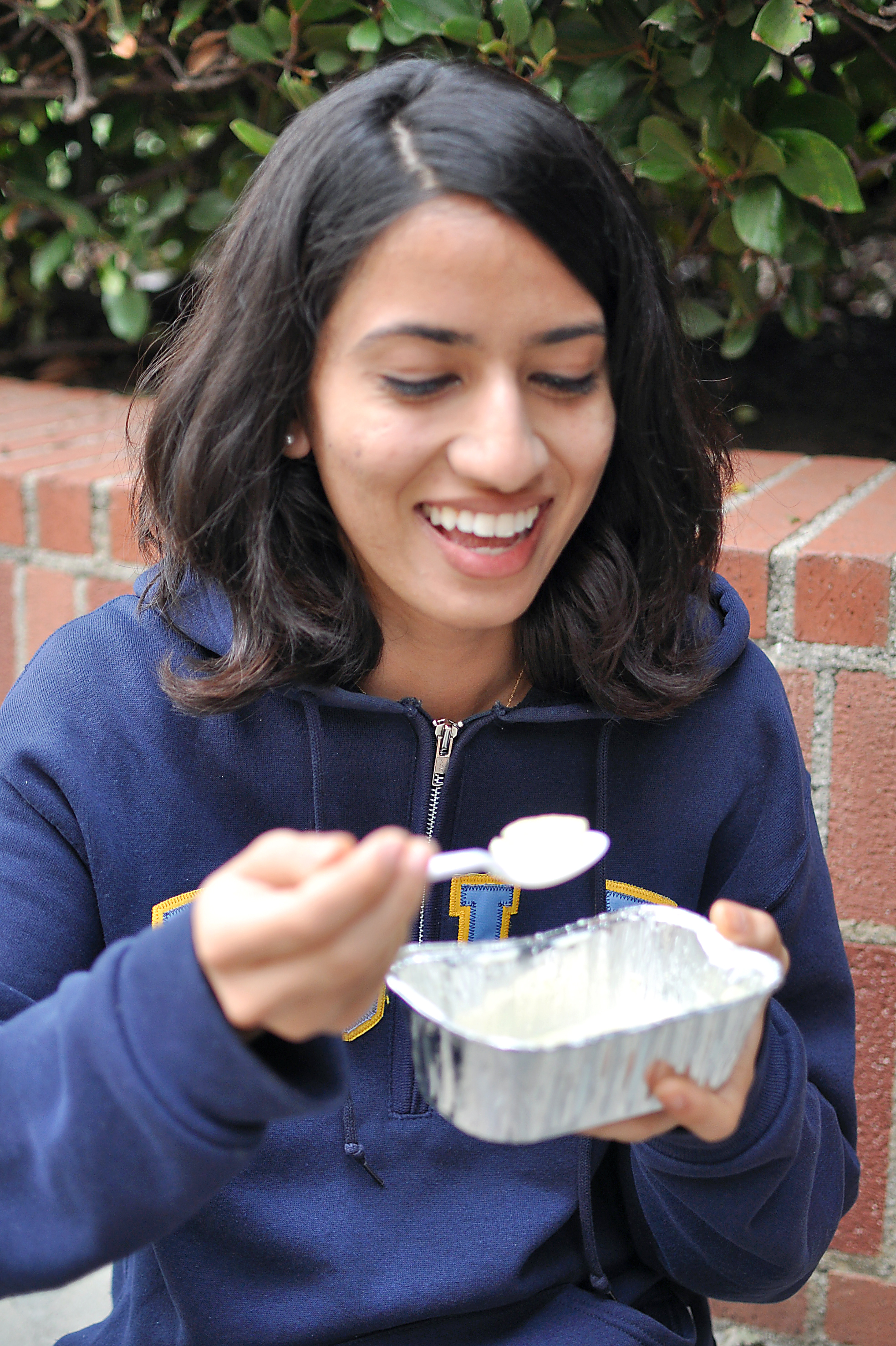

A proverb hanging on the window of Stan’s Donuts on Weyburn Avenue has always hit close to home: “Eat your desserts first ““ life is too uncertain.”
And so, this week’s recipe is a certain traditional Pakistani dessert called Rasmalai, sent in by fourth-year biology student Laila Mohammad.
The taste of Rasmalai is gentle, sweet and different. The milk isn’t thick, but with a cup of sugar, certainly saccharine. The cardamom adds a wonderful, sweet spice, which is complemented by the saffron. The ricotta cakes are less sweet than the sauce, which balances the flavors of the dessert.
Luckily, none of the ingredients this week expire within 24 hours (see the French egg sandwich column from last week), and on Monday afternoon, Mohammad agreed to taste the Rasmalai I had made Sunday night.
Ever-nervous, I handed the foil package of cold, baked ricotta and sweet milk to Mohammad. She ate all of it, even finishing the sauce, and said that it tasted exactly like the Rasmalai from Pakistani restaurants, as well as what she makes.
This was the nicest thing I’d heard all week, especially coming from Mohammad, whose parents are both Pakistani and make the dish often.
She also said that she generally cooks at least five times a week ““ a feat that I call heroic.
This week’s culinary process was quite enjoyable and the ingredients simple for the most part. All you need is some half and half, ricotta cheese, sugar, pistachios and almonds, plus cardamom seeds. The only minor setback I ran into was saffron ““ the spice that basically looks you in the face, smirks and says, “I’m exotic; that will be $8.99 for a pinch.”
Saffron, a spice originating in the Near East, is known as one of the most expensive spices to import.
According to UCLA Biomedical Library’s History and Special Collections, it is the labor-intensive harvesting process of separating the stigma of the crocus flower that makes it so pricey.
I encountered the high import price while buying the long red seed that is used in everything from Persian ice cream to traditional Middle Eastern dishes. When I reached the front of the line, the cashier at Whole Foods asked me if I was buying an empty bottle.
There was literally a .1-ounce pinch in a miniature Ziploc bag in the 2-ounce bottle, so I laughed and said that I basically was.
When heated with the half and half and cardamom (which, by the way, might be the most enticing aroma to hit my kitchen), the saffron turns portions of the liquid into strands of a beautiful reddish-yellow color. Its taste is ever so distinct and different, proving that you really do get what you pay for.
After folding the ricotta into a muffin pan and baking for about 40 minutes, the creamy liquid is added to a bowl, submersing the miniature cakes.
Then the whole thing is decorated with pistachios and blanched slivered almonds. It’s best served chilled, so refrigerate for a few hours.
According to Mohammad, the recipe can also include rose water, which adds yet another distinct flavor. The dessert can also be made without saffron, which can be pricey.
I loved making this dessert and will definitely try it again, probably with that rose water, too. There is just something so different, yet comforting, about a bowl of sweet milk and spice waiting in the fridge.
Want to be featured in next week’s column? Tried one of the recipes from the past weeks? Let Krivoruchko know how it went. E-mail her a recipe or culinary tale to mkrivoruchko@media.ucla.edu.
